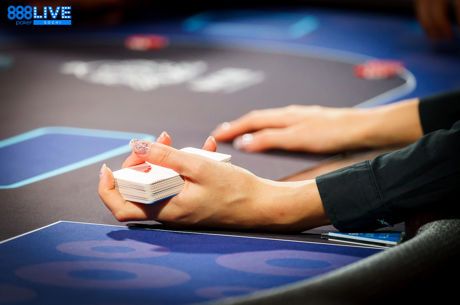Strategy Vault: Mixed-Games Variance and Bankroll Considerations

Digging deep into the PokerNews strategy archives can lead to a buried treasure, so we'll be unearthing a few gems for your viewing pleasure. In this edition of the Strategy Vault series, we're resurfacing a piece about mixed-games variance and managing your bankroll in this type of format.
If you're the typical poker player that's come up through the ranks any time in the last 10 years, you've probably played more than your share of no-limit hold'em. In fact, I'd be willing to bet that you've played no-limit hold'em almost exclusively. It used to be that poker players would grind their way up through the ranks playing fixed-limit hold'em, but ever since the "Moneymaker Effect", the cash game of choice has switched to no-limit hold'em.
Mixed games, however, are rarely played in pot-limit or no-limit variants. Certainly, it happens; a common variant is to play H.O. with hold'em played no-limit and omaha played pot-limit. That was the variant of the poker used for the high-stakes cash game at the 2009 Aussie Millions. That's the exception to the rule, though. More often than not, mixed games are played in a fixed-limit format, and that presents certain variance and bankroll considerations which should be a part of any competent player's game.
Topping the list is that you need to be properly bankrolled for the games you want to play. While there's no hard-and-fast rule as to what constitutes a proper bankroll, a useful rule of thumb is that you should have at least 300 big bets in your bankroll at an absolute minimum. For example, if you intend to play on a regular basis in a $15/30 B.T.O. game, you would want at least $9,000 in your bankroll. That number may seem overly high but it's very common to have downswings of 50 to 100 big bets when playing fixed-limit poker. One such extended downswing could easily wipe out your bankroll if you don't stick to the 300 big bets guideline. In fact, the prevailing wisdom is that you should have more than 300 big bets — as many as 400 or 500 — in your bankroll, in case you hit a downswing at the very start of your play.
It may seem surprising, at first glance, to learn that downswings of that magnitude are common in fixed-limit poker, even for winning players. That leads to a discussion of the variance inherent in this type of the game. In no-limit hold'em, good players have an inherent ability to punish bad players for a large amount of chips in one fell swoop. One bad decision by a bad player can cause him to forfeit a significant chunk of his stack. The result is that bad players have a tendency to bust quickly, while good players have a tendency to show a steadily growing profit over time.
In fixed-limit poker variants such as mixed games, there are restrictions in how much money can go in the pot at one time. This has three primary effects: first, many more decisions are required of the average player; second, the effects of bad decisions are not as noticeable on a player's bottom-line because, for example, they come in increments of $15 and $30 rather than for a whole stack of $500 or $1,000; and third, a bad player will not go broke as quickly. A results graph for fixed-limit mixed games tends to have more swings in it than its no-limit cousin, especially with the inability of players to make a pressure bet that folds opponents who would otherwise outdraw them.
Table conditions will also have a huge effect on your variance and the size of the bankroll you should bring to a game. There is a B.T.O. game that gets up on a periodic basis in Las Vegas. It's typically populated by players who enjoy three-betting and four-betting preflop with some very marginal hands. It's a juicy game but the swings are also wild, because everyone knows that's how the game plays, and few people are chased out of pots by a single raise or even two raises. In that kind of game, where you can expect most hands to be raised and many pots to be contested multi-way through showdown, the swings are much bigger than in games where a single raise in the first round of betting will thin all but one or two players from the field.
All of these reasons contribute to the theory held by some well-known professionals, like Phil Hellmuth, that fixed-limit poker has more luck to it than no-limit poker. That's never been a fair comparison in my mind. Both games have their quotient of luck and both have their quotient of skill. Making money at either may require different skill sets and strategies, but one is not inherently luckier than the other — it's just that one magnifies players' mistakes much more than the other. That's why proper bankroll management and variance management are tools found in every successful player's tool box.
This article was originally published on March 7, 2009.
Want to learn more about the different variants of poker? Check out the Poker Rules section here on PokerNews.
To stay on top of the poker world, follow us on Twitter and like us on Facebook.








